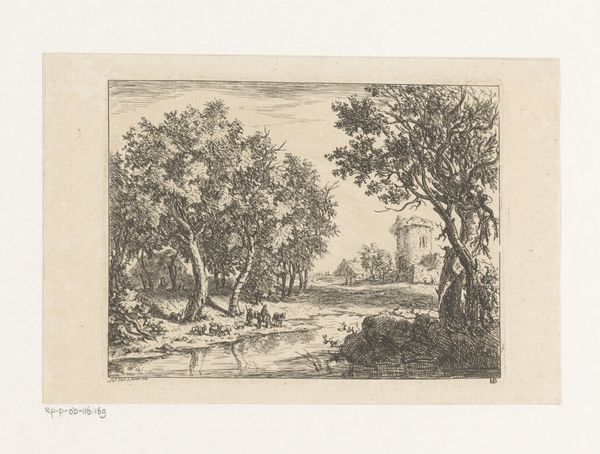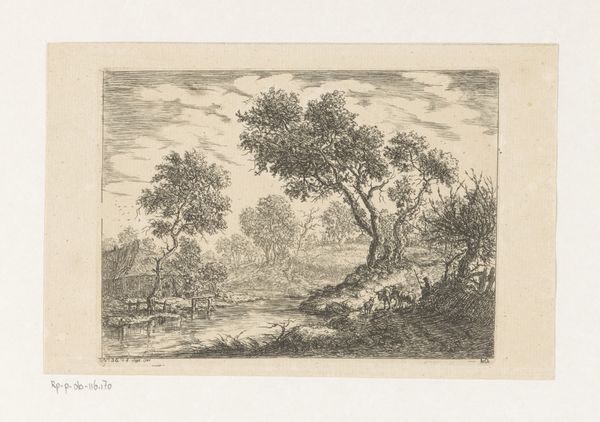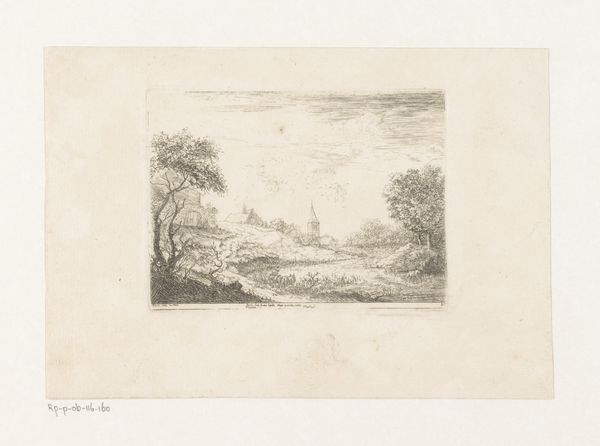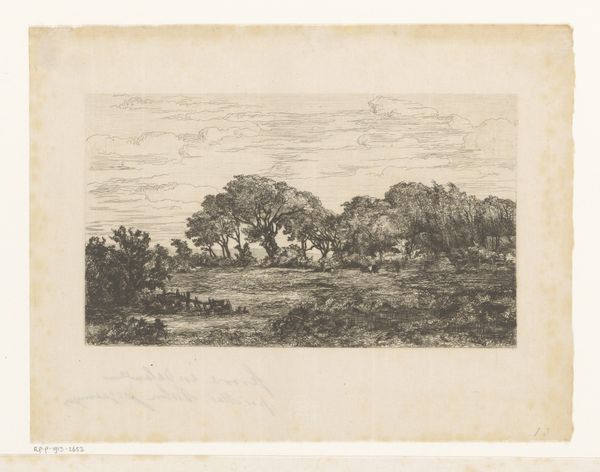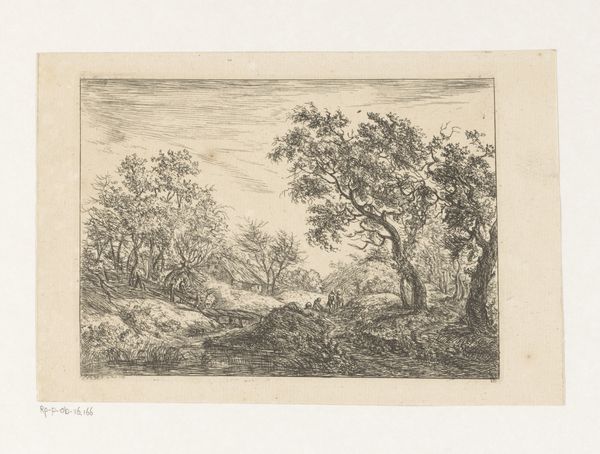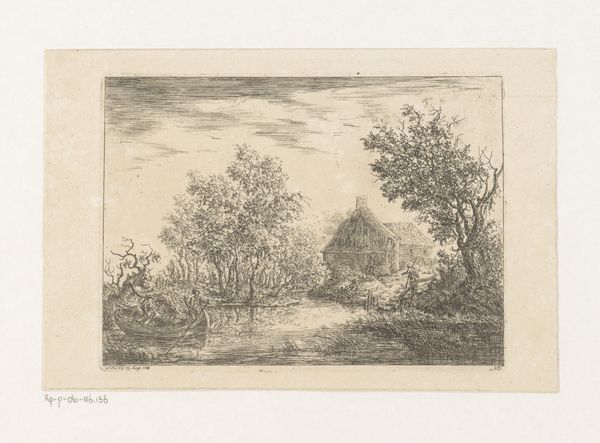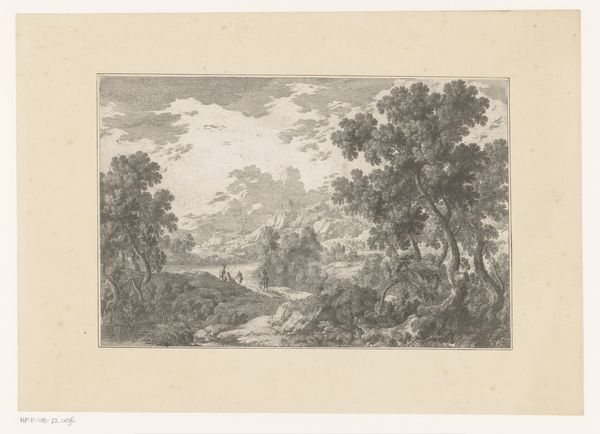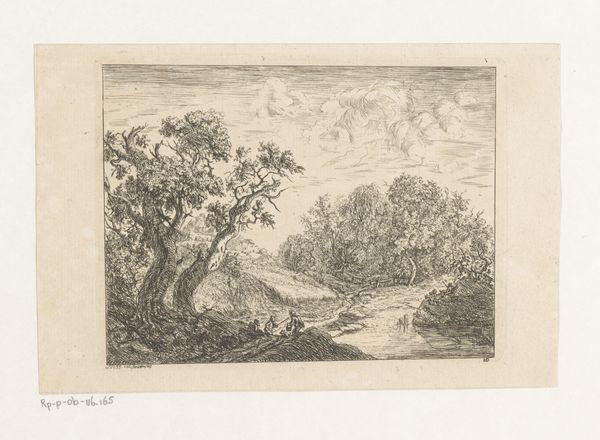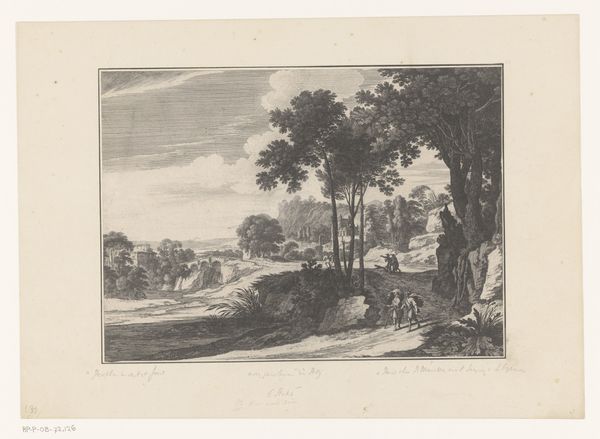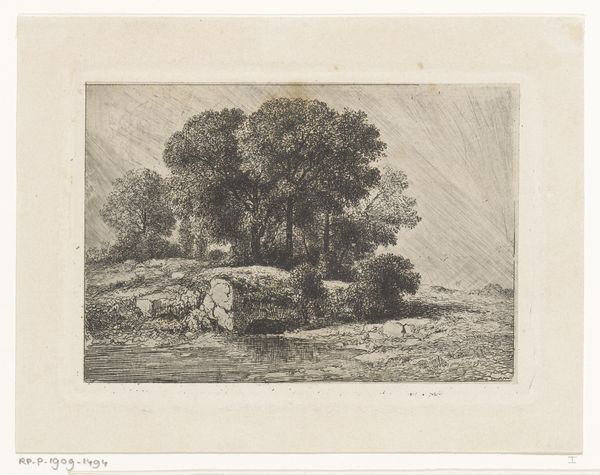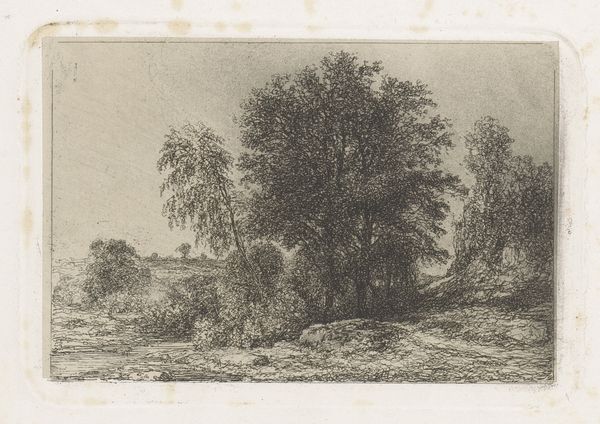
print, etching
#
baroque
# print
#
etching
#
old engraving style
#
landscape
#
etching
#
pencil drawing
#
cityscape
Dimensions: height 135 mm, width 179 mm
Copyright: Rijks Museum: Open Domain
This landscape, made by Christian Ludwig von Hagedorn, is an etching. The etcher protects a metal plate with a waxy coating, draws through it with a needle, and then bathes the plate in acid, which bites away the exposed lines. Hagedorn’s etching isn’t just a pretty picture; it’s a testament to skilled labor. The controlled lines, the subtle gradations of tone – these are not accidental. They’re the result of a practiced hand, a deep understanding of materials, and a mastery of the etching process. Think, too, about the economics of printmaking. Etchings like this were relatively inexpensive to produce, and thus brought art to a wider audience. So, in a way, this image democratizes art, making it accessible beyond the wealthy elite, spreading ideas and aesthetics into the broader culture. Next time you look at an etching, remember the layers of labor, skill, and social context embedded within its lines.
Comments
No comments
Be the first to comment and join the conversation on the ultimate creative platform.
